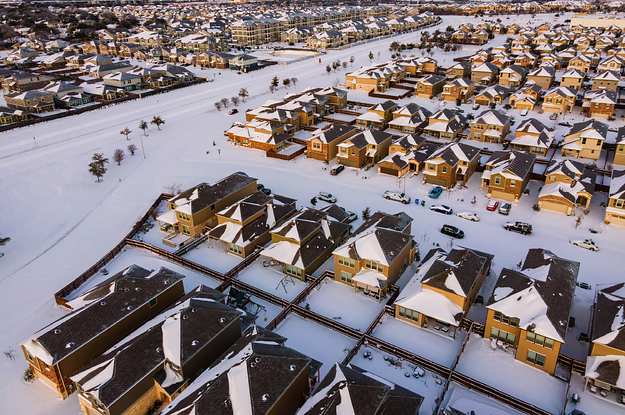On New Year’s Eve, with few people watching, the Texas Department of State Health Services announced that 246 people died in the February 2021 winter storm that took down much of the state’s power grid. The new figure is 36 higher than the state’s previous count but is still almost certainly wrong.
According to an analysis of “excess deaths” in the week of the power outages by BuzzFeed News, the true number is likely more than 750.
“Independent reports suggest this is a gross undercount and that over 700 died,” tweeted Beto O’Rourke on Tuesday in a reference to our investigation. O’Rourke is a former Democratic member of Congress from El Paso who is now running to be Texas governor.
He went on to blame his Republican opponent, Gov. Greg Abbott, for the deaths. “They were killed by the incompetence and corruption of Abbott who was warned repeatedly about the grid’s vulnerabilities but did nothing,” O’Rourke said. “And after the grid failed and hundreds died, he still did nothing. We could see more tragedy the next time Texas experiences extreme weather.”
“It’s pretty telling that the Abbott administration would try to bury these findings by releasing them on New Year’s Eve,” O’Rourke told BuzzFeed News by email. “Every single Texan who lost a loved one because of the power grid failure deserves an answer from Governor Abbott, and that must start with the Abbott administration acknowledging the true human toll.”
Abbott’s office did not immediately respond to requests for comment.
This was a largely avoidable disaster, federal officials reported in November. After a previous winter storm in 2011, in which the state’s power grid narrowly avoided a similar calamity, the federal government warned Texas that its power infrastructure was vulnerable to failure in extreme cold. Yet little had been done to winterize the grid and correct the problem in the intervening decade.
In the new report on the storm’s death toll, the Texas health department says it searched for death certificate narratives that mentioned the winter storm as well as for suggestive language such as “icy” or “freezing weather.” It also looked for death records with causes such as hypothermia or carbon monoxide poisoning — which happened as people desperately tried to keep warm when the power went off by running generators, barbecue grills, or their cars in enclosed spaces.
Specifically, the report found that 161 people died from extreme cold exposure, 22 died in vehicle accidents, 19 died from carbon monoxide poisoning, 10 from fires, and nine from injuries linked to falls. Officials also concluded that 25 people died from “exacerbation of pre-existing illness” during the storm and its aftermath, including five from cardiovascular disease.
A Department of State Health Services spokesperson told BuzzFeed News by email that it evaluated “actual causes of death” rather than coming up with a “vague estimate” of the total number. “As noted in the report, we follow national standards to do so, including Centers for Disease Control and Prevention definitions for direct, indirect, and possible related disaster deaths for case ascertainment,” the spokesperson said.
But as BuzzFeed News’s reporting and academic studies have shown, death certificates are often inaccurate or incomplete. Only about a dozen of the 254 counties in Texas have their own medical examiner’s offices. Elsewhere in the state, confirming the cause of death is ultimately the responsibility of elected officials — who must contract out to medical examiners in larger counties if they want a more extensive examination.
The state’s investigation will have captured some of the deaths from the storm and power outages, but not all.
For example, our analysis of death certificate data collated from the state by the CDC shows there was a clear anomaly in deaths attributed to cardiovascular disease in the week following the storm and power outages, with a spike of some 200 deaths attributed to this cause in the week ending Feb. 20 compared to the previous and following weeks.

